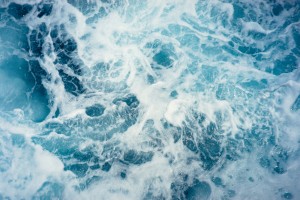
Marine report paints sobering picture
Ocean acidification, rising sea levels and increased sea surface temperatures are part of the sobering picture of Aotearoa’s marine environment painted in a recent report.
‘Our Marine Environment 2022’, jointly produced by the Ministry for the Environment and Stats NZ, shows aspects of the marine environment are at risk due to climate change, pollution, human activity and other pressures.
The report warns of the impact these climate changes would have on our health and wellbeing. Coastal communities, infrastructure, coastal habitats and biodiversity. For many Māori, climate change will affect homes and sites of significance including marae, urupā, and wāhi tapu.
“Data and research updated since the 2019 ‘Our Marine Environment’ report show climate change is continuing to drive ocean acidification, raise sea levels, and increase sea surface temperatures,” says Natasha Lewis, Deputy Secretary Joint Evidence, Data and Insights at the Ministry for the Environment.
“Another finding is that coastal and estuarine water quality improved in some places and for some measures but was worsening in others. Human activities like land use intensification, urban development and agriculture can contribute to poor water quality.
“When the marine environment is under stress, it can affect ecosystems and things that are important to New Zealanders.
“For example, climate change is causing sea level rise, which impacts coastal communities, sites of cultural and ecological significance, and marine species. Sedimentation and pollution affect water quality, which can threaten biodiversity and public health,” she says.
The report’s findings are based on official sources including Crown research institutes, central government agencies and local government bodies. Supporting information comes from peer reviewed published literature and other reputable sources. This includes mātauranga Māori and observational tools that identify changes in ecosystems.
Impacts of climate-related changes include:
- sea level rise affects coastal communities, infrastructure, coastal habitats and biodiversity.
- for many Māori, climate change will affect homes and sites of significance including marae, urupā, and wāhi tapu.
- thousands of kilometres of roads and water pipes and $26 billion worth of buildings are vulnerable to sea level rise of 0.6m.
- ocean acidification affects many marine species. For example shellfish struggle to grow and reproduce, and corals – which support a wide variety of sea life – can die.
Impacts of poor water quality and pollution include:
- high nutrient levels can increase toxic algal blooms. Both can harm kai moana species and affect mahinga kai practices, such as harvesting and protecting seafood.
- sediment can clog the gills of cockles, pipi, and scallops, which feed by filtering food from the water.
- bans or restrictions on shellfish gathering, aquaculture and recreation are needed in areas with high bacteria and toxin levels, due to the risk of illnesses such as gastroenteritis, respiratory problems, and ear and skin infections.
- plastic pollution can affect or kill marine species and seabirds – either directly or via contaminants that move up the food chain.
READ FULL REPORT HERE
(Banner photo by Christoffer Engström on Unsplash)